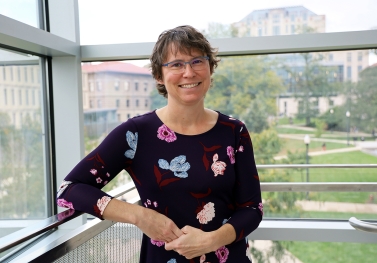Study analyzes opioid burden, providers by county

Image courtesy Oregon Health & Science University.
Medication-assisted treatment is among the most effective approaches to treat opioid dependency, but not as many Ohio clinicians who could be administering drugs like buprenorphine or naltrexone are doing so, found a recent study in the Ohio Journal of Public Health.
Medications have long been used to help patients struggling with addiction through withdrawal or to prevent overdose. And in 2016, the Comprehensive Addiction and Recovery Act gave nurse practitioners and physician assistants greater authority to administer these treatments.
But the new research found that physicians still make up nearly 60% of medication-assisted treatment providers in the state. The study, led by Ariana Pitcher, a 2021 alumna of the Ohio State College of Public Health, also identified several high-need counties that likely have an inadequate workforce to address the opioid crisis.
“Not only is there a stronger need for more mental health resources in this country, but we are experiencing a strain on the physician workforce in both supply and capacity to meet this demand. Training more nurse practitioners and physician assistants to administer this treatment could potentially fill a huge gap in the availability of mental health resources for those struggling with opioid misuse,” Pitcher said.
The study looked at opioid overdose deaths and the scope of medication-assisted treatment providers across Ohio’s 88 counties.
“Ohio is in the top five states for opioid-involved overdose deaths, and the main purpose of this study was to see if Ohio’s current infrastructure is sufficient to meet the needs of reducing opioid-related mortality,” said Pitcher, who completed the research as an undergraduate student under health services management and policy professor Wendy Xu.
On average, the state had 13.9 providers per 100,000 people. While counties with more opioid overdose deaths generally had a higher density of providers, there was a lot of variation across the state, Pitcher said, adding that there are particular workforce challenges in poorer rural areas.
“There are a lot of counties that still need many resources. But to me, the most meaningful part of these results is that they show we have significant room to expand medication-assisted treatment within the state by having more nurse practitioners and physician assistants become providers for medication assisted treatment,” Pitcher said.
Added Xu: "This finding speaks to the larger national shortages and maldistributions of health care providers available to treat opioid-dependent patients.”
 Working on the paper as an undergraduate inspired Pitcher to shift her plans to attend medical school to instead pursue a career in health policy research.
Working on the paper as an undergraduate inspired Pitcher to shift her plans to attend medical school to instead pursue a career in health policy research.
“It encompasses all the things I love: Quantitative reasoning, a curiosity for state and federal politics, and a passion to ensure all have access to quality health care. It has been great to combine all these things I care about and see meaningful results,” said Pitcher, now a Master of Public Health student at the University of North Carolina at Chapel Hill. “I honestly owe so much of my success to Dr. Xu because she was willing to take me in and walk me through the research process.”











